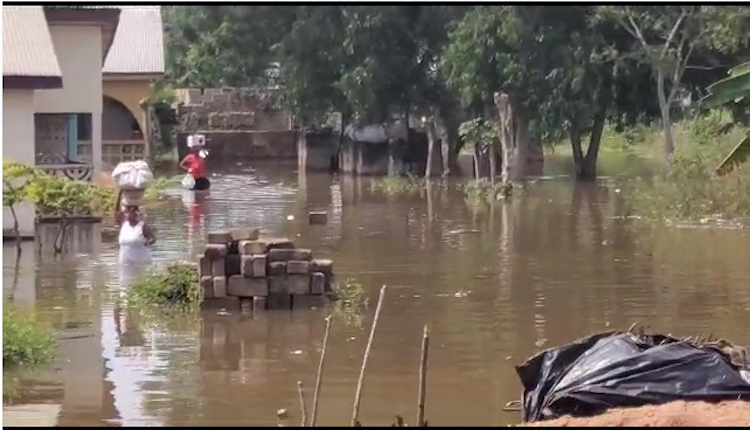By Lisa Vives, Global Information Network
NEW YORK | ACCRA | 16 October 2023 (IDN) — Widespread spillage from Ghana’s Akosombo Dam on the Volta River has forced over 4,000 people to abandon their homes due to flooding.
The Volta River Authority (VRA) initiated controlled spillage of the Akosombo and Kpong Dams on 15 September due to a consistent rise in water levels upstream of the Akosombo Dam, primarily caused by heavy rainfall.
This controlled spillage has recently intensified to address the persistently rising water levels, which posed a significant threat to the dams.
Tragically, this spillage has led to catastrophic flooding in numerous fishing communities, displacing hundreds of residents.
Many homes are submerged and roads cut off in parts of the Volta and Eastern regions, according to the National Disaster Management Organization. At the same time, essential services have been disrupted, leaving some areas without access to water and electricity.
The Ghanaian government confirmed that Comboni Hospital staff had to evacuate their quarters, and patients were discharged with only 10 in critical condition remaining. Some 400 bodies had to be removed by family members when power was suspended.
The Akosombo Dam was completed in 1965 as part of the Volta River Project. Its construction was jointly financed by the government of Ghana, the World Bank, the United States, and the United Kingdom.
Its primary purpose was to provide electricity for the U.S. aluminum industry and was called the largest single investment in the economic development plans of Ghana.
Some 80,000 people were displaced during the dam’s construction, leaving thousands without livelihoods.
Kwame Nkrumah’s dream project
The Akosombo Dam was Kwame Nkrumah’s dream project to develop Ghana as a leading industrial nation. However, seismic activity led to coastal erosion; microclimatic changes with less rain and higher temperatures.
The soil surrounding the lake is less fertile than the soil under it, and heavy agricultural use has required the use of fertilizers, which in turn has caused the explosive growth of an invasive weed that renders water navigation and transportation difficult, and forms a habitat for water-borne illnesses such as bilharzia, river blindness and malaria.
Resettlement of the displaced inhabitants proved complex and in some cases unsuccessful; traditional farming practices disappeared and poverty increased.
MP Abla Dzifa Gomashe, resenting Kenu North Constituency in the Volta Region, voiced her frustration with President Nana Addo Dankwa Akufo-Addo for failing to respond to the flooding of several communities.
She pointed out that while the president and his government have seemingly disregarded the plight of the affected people, he was quick to tweet his condolences to the King of Morocco regarding an earthquake in that country.
She said that affected communities in the vicinity were not adequately informed about the spillage, leaving them unprepared for the deluge. [IDN-InDepthNews]
Photo: Akosombi Dam spillage: a necessary evil. Credit: The Business and Financial Times, Ghana
IDN is the flagship agency of the Non-profit International Press Syndicate.


